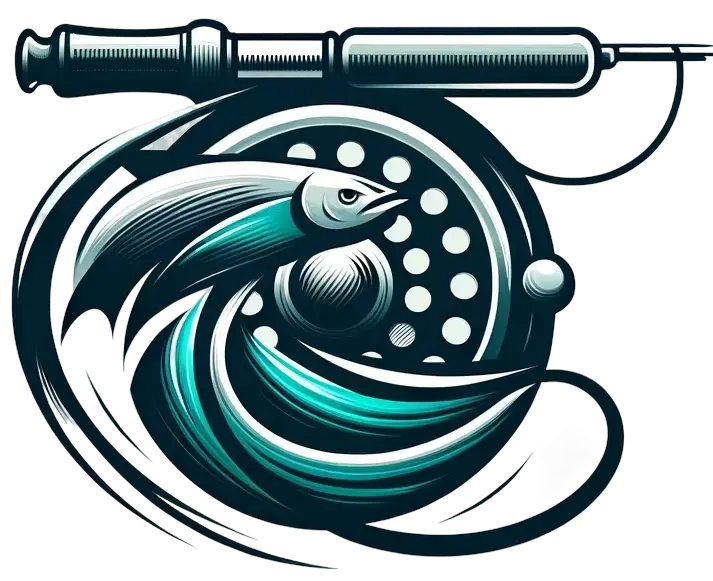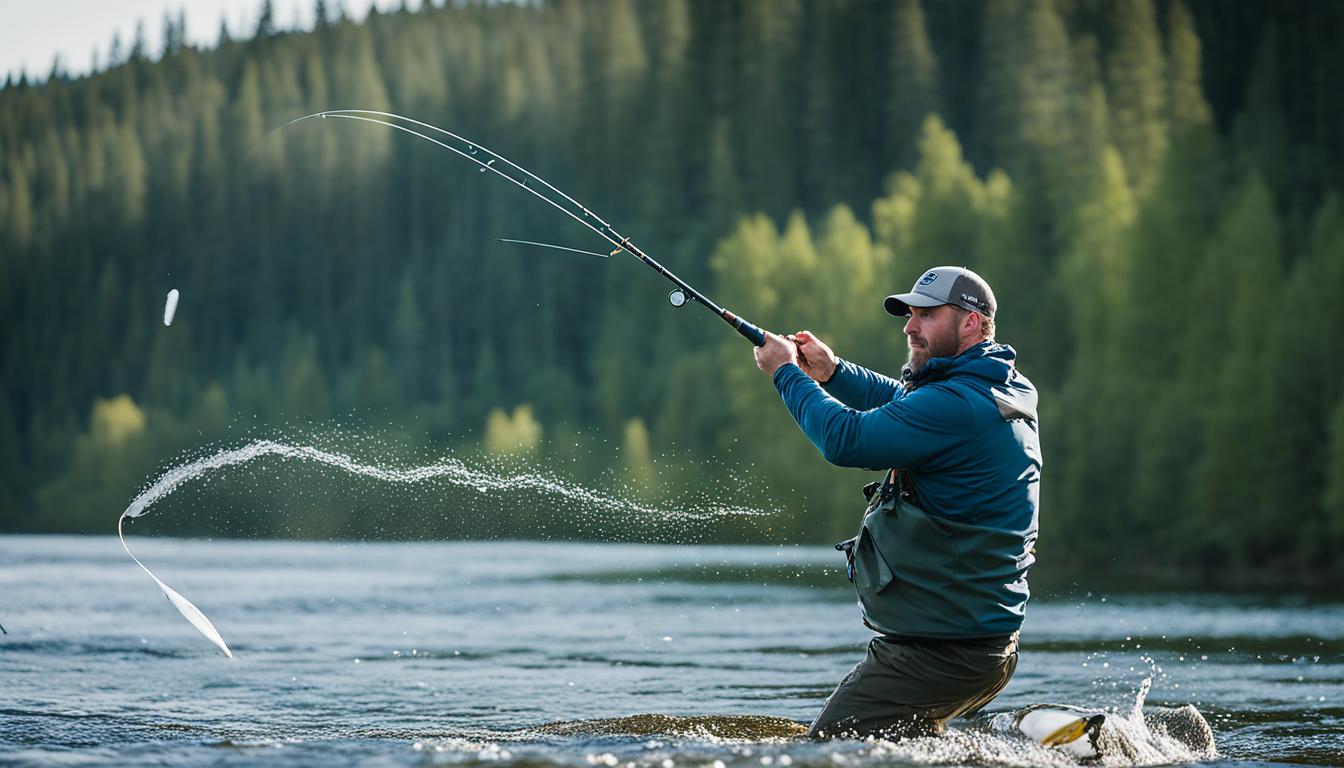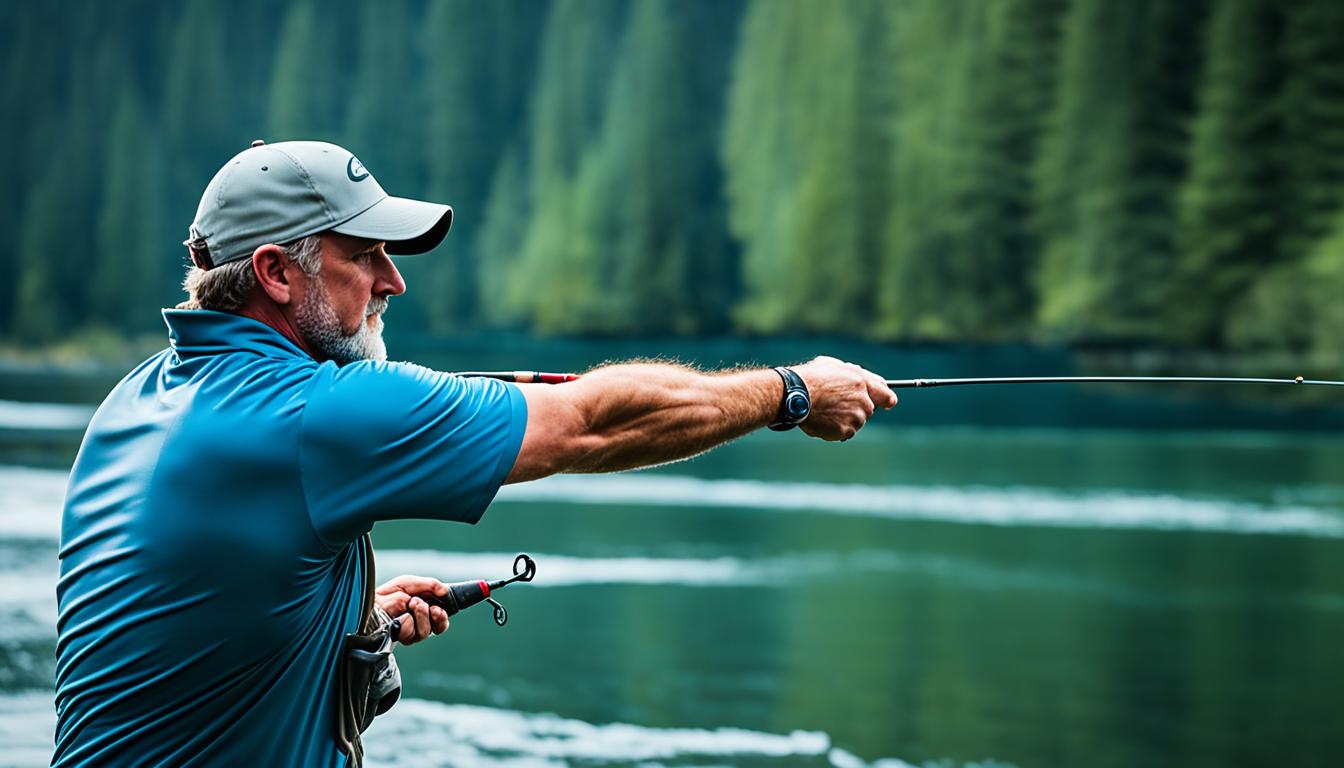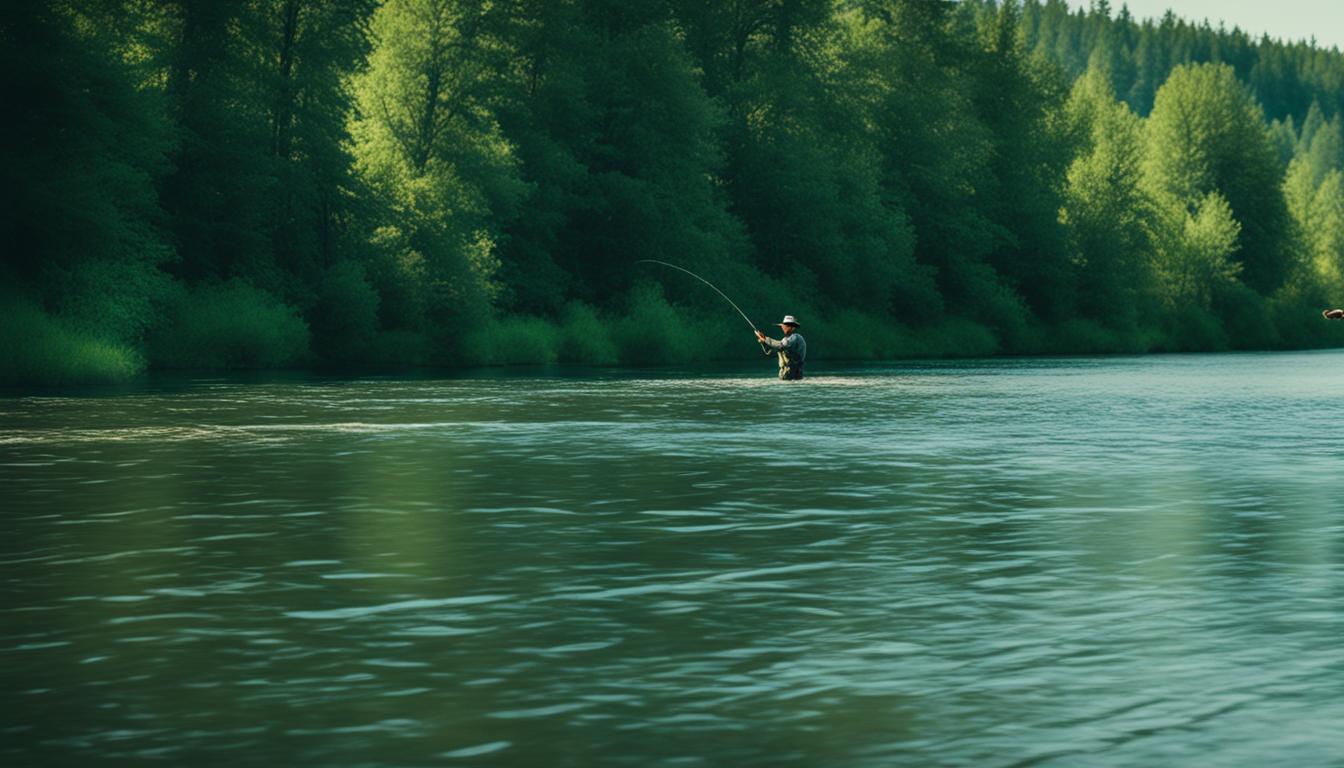Spey casting is a challenging fly-fishing technique that requires the use of longer, two-handed rods and relies on the weight of the line and water resistance to create casts. It originated on the River Spey in Scotland and is designed to allow anglers to cast great distances with minimal effort. Learning the fundamentals of Spey casting can be daunting for beginners, but with the right techniques and practice, it can be mastered.
Key Takeaways:
- Spey casting is a fly-fishing technique that uses two-handed rods for casting long distances.
- It relies on the weight of the line and water resistance to create casts.
- Mastering Spey casting fundamentals takes practice and patience.
- Choosing the right rod and line is crucial for successful Spey casting.
- Forming the D-loop and sweeping the line are important techniques in Spey casting.
Choosing the Right Spey Rod and Spey Line
When it comes to Spey casting, selecting the appropriate rod and line is paramount to your success on the water. Whether you’re a beginner or an experienced angler, understanding the nuances of Spey rods and lines will greatly enhance your casting performance. Here are some tips to help you make the best choices for your next fly-fishing adventure.
Consider the Fishing Conditions
The first step in choosing the right Spey rod and line is to consider the fishing conditions you’ll be facing. If you’re planning to target trout in smaller rivers, a lighter and more flexible rod will offer greater control and finesse. On the other hand, if you’re pursuing larger fish in larger rivers, a heavier action rod will provide the power and backbone needed to handle those stronger fish.
Length Matters
The length of your Spey rod is another important factor to consider. Shorter rods are generally more forgiving and easier to cast, making them ideal for beginners. They also perform well in tight quarters or when fishing in areas with overhead obstacles. Longer rods, on the other hand, excel at longer casts and provide increased line control, making them popular among experienced Spey casters.
Choose the Right Spey Line
When it comes to Spey lines, the Skagit head is often recommended for beginners. Its shorter, heavier design allows for easier line management and better casting control. Skagit lines are versatile and perform well in a variety of casting scenarios, making them a great choice for anglers looking to improve their Spey casting techniques.
“Choosing the right Spey rod and line is crucial for a successful casting experience. Consider the fishing conditions and select a rod that suits your target species and fishing environment. Additionally, the choice of a Skagit line can enhance your casting control and versatility.”
By carefully selecting the right Spey rod and line, you can optimize your casting technique and improve your overall fly-fishing performance. Remember, practice and experimentation are key to finding the perfect setup that suits your individual style and preferences. So get out on the water, try different combinations, and enjoy the artistry and thrill of Spey casting.
Forming The D-Loop
The D-loop is the foundation of all Spey casts and understanding how to form it is crucial. To create a D-loop, lift the rod with both hands above your shoulders, allowing the belly of the line to drop back slightly behind you. This creates tension and forms the shape of a “D.” The anchor point, which secures the bottom of the D-loop to the water, should be approximately one full rod length away from where you’re standing. From this position, you can make the cast by pulling the handle of the rod sharply towards your chest and guiding the rod forward towards the target.
To visually demonstrate the process of forming the D-loop, refer to the image above. This image illustrates the correct positioning of the rod and the D-loop shape.
“Forming a proper D-loop is essential for successful Spey casting. Without a well-formed and tensioned D-loop, the cast will lose power and accuracy. Mastering this technique will significantly improve your Spey casting performance.”
By mastering the D-loop formation, you’ll have a strong foundation to perform various Spey casting techniques. It’s important to practice this motion repeatedly until it becomes second nature. The D-loop is the starting point for executing powerful and accurate Spey casts.
Common Mistakes in Forming the D-Loop
| Mistake | Explanation | How to Correct |
|---|---|---|
| Insufficient rod lift | Not lifting the rod high enough above the shoulders, resulting in a sagging belly of the line. | Lift the rod with both hands until it’s comfortably above shoulder height to create tension in the line. |
| Improper anchor point placement | Placing the anchor point too close or too far from where you’re standing, affecting the shape and tension of the D-loop. | Position the anchor point approximately one full rod length away from your stance for optimal D-loop formation. |
| Inadequate handle pull | Not pulling the handle of the rod sharply towards your chest, resulting in a loose and ineffective D-loop. | Ensure a swift and forceful handle pull towards your chest to create a tight and controlled D-loop. |
By avoiding these common mistakes and practicing the correct technique, you’ll be well on your way to mastering the D-loop formation. With a solid foundation, you can progress to more advanced Spey casting techniques and enjoy the benefits it brings to your fly-fishing experience.
Sweeping the Line
Sweeping the line is an essential technique in Spey casting that adds power and distance to your cast. By using a sweeping motion, you can create water resistance and tension, allowing you to generate more force in your cast. Here’s how to perform a proper line sweep:
- Position yourself: Turn your body so that your dominant shoulder faces slightly downstream. This position enables you to sweep the line across your body effectively.
- Raise the rod: Quickly raise the rod to chest height, holding it with both hands.
- Sweep the line: Begin sweeping the rod back downstream, ensuring the line passes your shoulder. This sweeping motion creates momentum and loads the rod.
The momentum generated from the line sweep will allow you to make a powerful and accurate cast, covering more distance with ease. Practice the line sweep technique to become proficient in Spey casting.
Remember, learning Spey casting takes time and practice. But with these foundational techniques, like sweeping the line, you’ll be well on your way to mastering this rewarding fly-fishing technique.
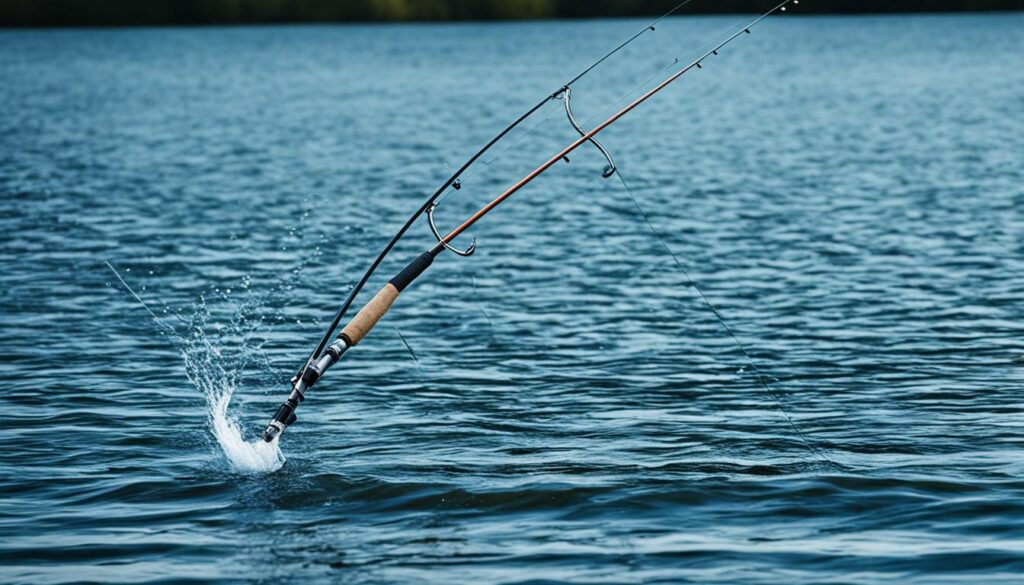
Conclusion
Spey casting is an incredibly rewarding technique in the world of fly fishing. It offers anglers the ability to cast impressive distances with minimal effort, making it a valuable skill to master. Throughout this article, we have explored the essential fundamentals of Spey casting, including choosing the right rod and line, forming the D-loop, and sweeping the line.
By understanding these key elements and investing time in practice and patience, anyone can become proficient in Spey casting. While it may initially seem challenging, the satisfaction of connecting with fish and the ability to cover more water will make your efforts well worth it. So, why wait? Start learning Spey casting today and unlock a whole new level of fly fishing enjoyment.
Whether you’re an experienced angler or a beginner, Spey casting tutorials can provide valuable guidance and tips to enhance your skills. Be sure to explore resources and tutorials available online and consider joining a local fly fishing club or engaging with fellow enthusiasts to learn from their experiences. Remember, the key to mastering Spey casting is persistence and continuous learning. So, get out on the water, practice your techniques, and enjoy the thrill of Spey casting in your fly fishing adventures.
FAQ
What is Spey casting?
Spey casting is a challenging fly-fishing technique that uses longer, two-handed rods and relies on the weight of the line and water resistance to create casts. It originated on the River Spey in Scotland and allows anglers to cast great distances with minimal effort.
What kind of rod and line should I choose for Spey casting?
The choice of rod and line depends on factors such as the size of the river and the fish you’re targeting. For smaller rivers and trout fishing, a lighter and more flexible rod is recommended. On larger rivers and for larger fish, a heavier action rod is better. As for the Spey line, the Skagit head is a versatile option and easier to manage for beginners.
How do I form a D-loop in Spey casting?
To create a D-loop, lift the rod with both hands above your shoulders, allowing the line to drop back behind you. This creates tension and forms the shape of a “D.” The anchor point, which secures the bottom of the D-loop to the water, should be approximately one full rod length away from where you’re standing. From this position, you can make the cast by pulling the handle of the rod sharply towards your chest and guiding the rod forward towards the target.
What is the sweeping motion in Spey casting?
Sweeping the line involves turning your body so that your dominant shoulder faces slightly downstream and then sweeping the line across your body, creating water resistance and tension. This is done by quickly raising the rod chest high and sweeping it back downstream until the line passes your shoulder. The momentum from the sweep will carry the line back behind your shoulder, overloading the rod and allowing for a powerful and accurate cast.
Is Spey casting difficult to learn?
Spey casting can be challenging for beginners, but with the right techniques and practice, it can be mastered. It’s important to start with the fundamentals, choose the right equipment, and practice forming the D-loop and sweeping the line. With time and patience, anyone can become proficient in Spey casting.
